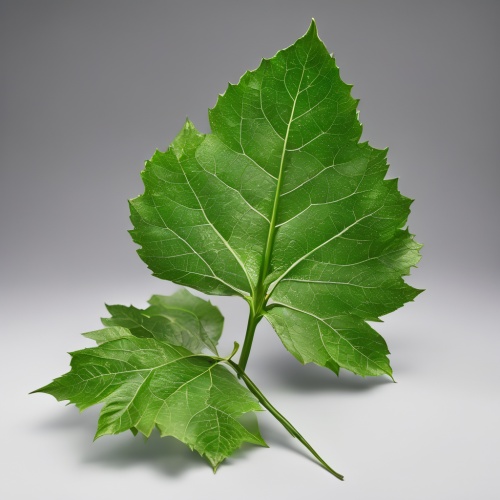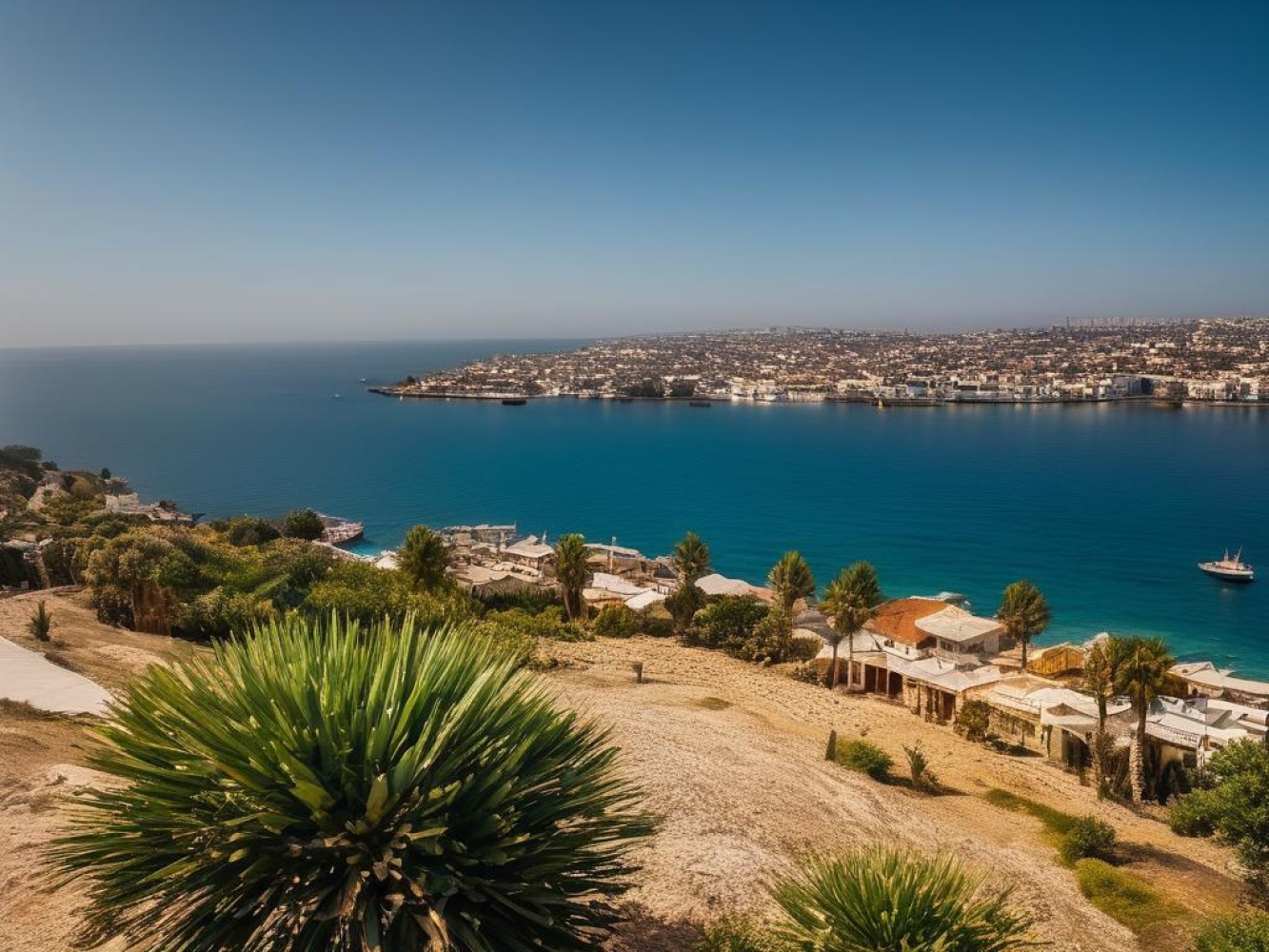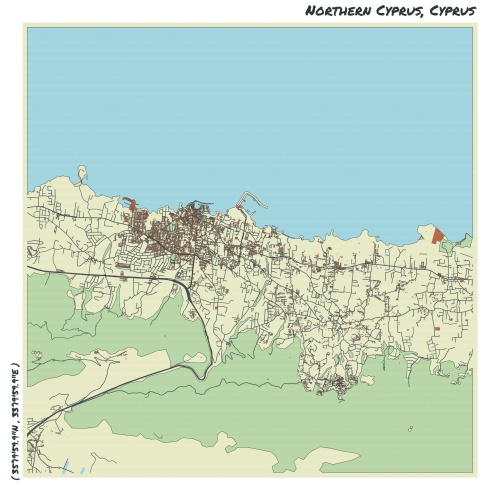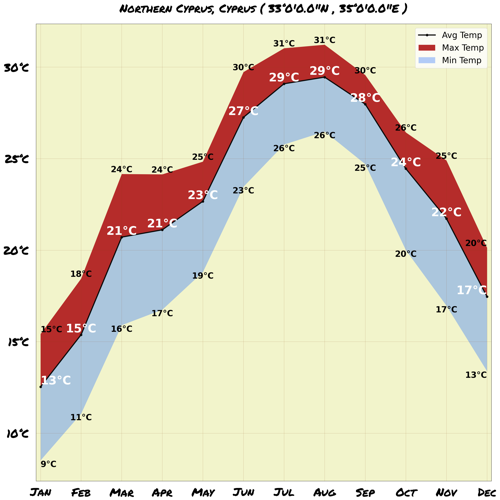Understand
Cyprus, a Mediterranean island with a turbulent past, gained independence from the United Kingdom in 1960. However, achieving a harmonious power-sharing agreement between the Greek Cypriot majority and the Turkish Cypriot minority proved challenging. From 1963 to 1974, tensions escalated, leading to a violent clash between the two communities. In 1974, Turkey intervened by sending its army to occupy the northern and eastern regions of the island. The aftermath of this conflict resulted in the declaration of independence by the Turkish-held area, known as the "Turkish Republic of Northern Cyprus." While Turkey recognizes this entity, the rest of the world, including the United Nations, recognizes the government of the Republic of Cyprus over the entire island. The UN maintains a peacekeeping force and a buffer zone, called the 'Green Line,' which provides a fragile separation between the two ethnic groups. Although scarred by its past, Cyprus continues to be an enchanting destination that showcases the resilience and beauty of its people and landscapes. From its ancient ruins to its pristine beaches, this island offers a unique blend of history, culture, and natural wonders for visitors to explore and admire.
Get in
Are you dreaming of a trip to Northern Cyprus? We've got you covered on how to get there. The easiest way is by flying from Turkey to Ercan airport. Keep in mind that Northern Cyprus is not an internationally recognized state, so flying in from mainland Turkey is your best option. But if you're feeling a bit more adventurous, you can also take a ferry boat from ports in Turkey. It's a unique way to travel and offers stunning views along the way. Now, let's talk about visas. For most nationalities, you won't need a visa for stays of up to 30 days. However, citizens of Armenia and Nigeria do require a visa. Don't worry, though, getting a visa is a breeze. Simply visit one of the representative offices in London, Washington D.C., or New York to obtain your visa. If you're a citizen of a European Union country or Turkey, you're in luck! You can enter Northern Cyprus using your national ID card instead of a passport, as long as your stay is less than 30 days. Just be aware that if you decide to stay longer than 30 days, there's a fine of about 160 TL per day. Once you arrive, you'll need to pass through TRNC immigration. At land border crossings, your travel documents won't be stamped, but at TRNC sea/airports, you'll receive an entry stamp that's valid for 90 days. If you hold a foreign ID card, you'll need to fill out a white form known as the "giris-cikis formu," which will then be stamped. Don't worry, these stamps won't be a problem for future visits to Greece or South Cyprus for EU citizens. One thing to keep in mind is that if you're not an EU/EFTA citizen and you enter the island through the north, officials in the south may deny you entry. However, they usually perform spot checks, so it's not guaranteed that they'll check your stamps. And here's a handy tip: the Ledra Palace crossing, which used to be a pedestrian-only crossing for non-diplomats, can now be used by ordinary cars. So you'll have even more flexibility in exploring all that Northern Cyprus has to offer. Happy travels!
Map & Climate
Popular Foods
 Souvlaki is one of the most popular dishes in Cyprus. It consists of seasoned, skewered, and grilled meat, typically pork or chicken, accompanied by pita bread and sides like potatoes, salad, and tzatziki (a yogurt-based sauce). The meat is marinated in herbs, olive oil, and lemon juice, imparting a rich flavor to the dish.
Souvlaki is one of the most popular dishes in Cyprus. It consists of seasoned, skewered, and grilled meat, typically pork or chicken, accompanied by pita bread and sides like potatoes, salad, and tzatziki (a yogurt-based sauce). The meat is marinated in herbs, olive oil, and lemon juice, imparting a rich flavor to the dish. Koupepia is another popular Cypriot dish, featuring vine leaves wrapped around a mixture of minced meat (often beef or lamb), rice, onions, and various herbs and spices. They're then slow-cooked in a tomato and wine sauce, resulting in a delicious fusion of flavors and textures. Some versions may also include pine nuts or raisins for added depth.
Koupepia is another popular Cypriot dish, featuring vine leaves wrapped around a mixture of minced meat (often beef or lamb), rice, onions, and various herbs and spices. They're then slow-cooked in a tomato and wine sauce, resulting in a delicious fusion of flavors and textures. Some versions may also include pine nuts or raisins for added depth. Halloumi is a semi-hard, unripened cheese made primarily from a mixture of goat's and sheep's milk. Its high copper content gives halloumi its distinctive firm texture and rich, salty taste. Halloumi can be either smoked or unsalted, and is traditionally paired with watermelon or figs for a contrast of sweet and savory flavors.
Halloumi is a semi-hard, unripened cheese made primarily from a mixture of goat's and sheep's milk. Its high copper content gives halloumi its distinctive firm texture and rich, salty taste. Halloumi can be either smoked or unsalted, and is traditionally paired with watermelon or figs for a contrast of sweet and savory flavors.




Comments
NO COMMENTS